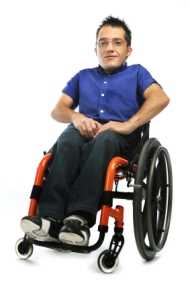Living With Spina Bifida: Young Adults

The transition from adolescence to adulthood can be a time of growth and success, as well as difficulty. For people with spina bifida, it is especially important to begin planning for transitions in childhood so they are able to lead independent lives as adults.
Young adults affected by spina bifida can face challenges, such as:
- Learning to take care of their own health needs.
- Working.
- Going to school.
- Volunteering.
- Finding and using transportation.
- Living outside their parents’ home.
- Developing healthy relationships.
Physical Health – What to Expect
Young adults with spina bifida can provide or manage much of their own care. Some examples include:
- Finding new doctors that care for adults affected by spina bifida.
- Obtaining medical insurance if they are no longer covered under their parents’ health plan.
- Talking to health care professionals about their condition.
- Making doctor appointments.
- Ordering or reordering medications and supplies.
- Seeking immediate medical help when needed.
- Managing their own bathroom plan.
Skin Care for Adolescents and Adults with Spina Bifida
Mobility and Physical Activity
Regular physical activity is important for all people, but especially for those with conditions that affect movement, such as spina bifida. CDC recommends 60 minutes of physical activity a day. There are many ways for people with spina bifida to be active. For example, they can:
- Roll or walk in the neighborhood.
- Lift weights.
- Participate in sports activities (for example, swimming) and teams for people with or those without disabilities.
For more information, please visit the following websites:
National Center on Physical Activity and Disability (NCPAD) – Spina Bifida Guidelines
Sexual Health and Sexuality
It is important that young adults with spina bifida talk with their healthcare professional about sexuality and sexual functioning, contraceptives, and reproductive concerns.
Spina bifida causes nerve damage that can affect sexual functioning. Females with spina bifida are affected less often than males. Most people with spina bifida are fertile, and can have children.
Health care for men with spina bifida
Health care for women with spina bifida
Folic Acid
Folic acid is very important. All women who can get pregnant should be sure to take 400 micrograms (µg) of folic acid every day, even if they aren’t planning a pregnancy anytime soon. Half of all pregnancies in the United States are unplanned. If a woman has enough folic acid in her body before and during pregnancy, it can help prevent major birth defects of the baby’s brain and spine―including spina bifida.

People who have spina bifida themselves are more likely to have children with spina bifida. A woman with spina bifida who is planning to get pregnant should talk with her doctor about getting a prescription to take 4,000 µg (4.0 milligrams) of folic acid one month before pregnancy and during early pregnancy.
For more information, please visit the following websites:
Mental Health and Well-Being
Overall mental health and well-being are very important for everyone. Mental health is how people think, feel, and act as they cope with life. To be at their best, people need to feel good about their lives and value themselves.
Young adults with spina bifida might feel isolated from others, or have low self-esteem. This can cause them to become depressed. There are different ways to treat depression. Exercise can be effective. Counseling or medication also might be needed.
Everyone feels worried, anxious, sad or stressed sometimes. If these feelings do not go away and they interfere with daily life, adults should talk with other people, such as a family member or health care professional, about their feelings.
If you have questions about mental health or where to get mental health services, your doctor or a licensed mental health professional in your community may be able to answer those questions or refer you to someone who can. A nearby health facility or your state mental health agency also may be able to help.
For more information, please visit the following websites:
Depression and Anxiety in Individuals with Spina Bifida
Getting Around
To be independent, young adults need to be able to find and use transportation safely. Many young adults with spina bifida have issues that can affect safe driving. A driver rehabilitation evaluation specialist can identify whether modifications to the car would make it accessible for a young adult with spina bifida.
Young adults can also learn to find and safely use buses, cabs, and ride-hailing services. As they plan for employment, college, or vocational training, young adults will need to find and use transportation safely.
Being safely mobile in their homes and communities will help young adults with spina bifida be more independent.
Looking to the Future
Many young adults are still getting used to being independent. They may have recently started working, volunteering, going to college, or living independently.
Continuing to plan for the future is very important. This includes setting goals and making a plan for how to achieve them. Unexpected problems can be challenging and it’s important for young adults to not give up and to keep working towards their goals. Sometimes the goals need to be modified, or they take longer than planned. Either way, planning now will help young adults with spina bifida continue to succeed.
Finding Support
Finding support and resources in the community can increase a young adult’s confidence in managing spina bifida, enhance their quality of life, and meet the needs of all family members.
Parents of young adults with spina bifida may want to talk to one another. One parent might have learned how to address some of the same concerns another parent has. Often, parents of other young adults with special needs can give advice and share resources about what’s worked for them.
Remember that the choices of one family might not be best for another family, so it’s important that parents understand all the options and discuss those with the appropriate healthcare professional.
- A Spina Bifida Association (SBA) Chapter is a great place to connect with other families. The SBA website can provide information on how to find a local chapter.
- The Spina Bifida Association Parents ListServ bring people together online to discuss topics such as parenting a child with spina bifida and growing up with spina bifida.
- National Resource Center Get information and find clinics or health care providers who are experts on spina bifida.
References
Sandler, Adrian, M.D.(2004). Living with Spina Bifida: A Guide for Families and Professionals. University of North Carolina Press: Chapel Hill.
Merkens, Mark J., M.D. and the Spina Bifida Association’s Professional Advisory Council (2006). Guidelines for Spina Bifida Health Care Services Throughout the Lifespan. Third Edition. Spina Bifida Association.
- Page last reviewed: September 18, 2017
- Page last updated: September 18, 2017
- Content source:


 ShareCompartir
ShareCompartir